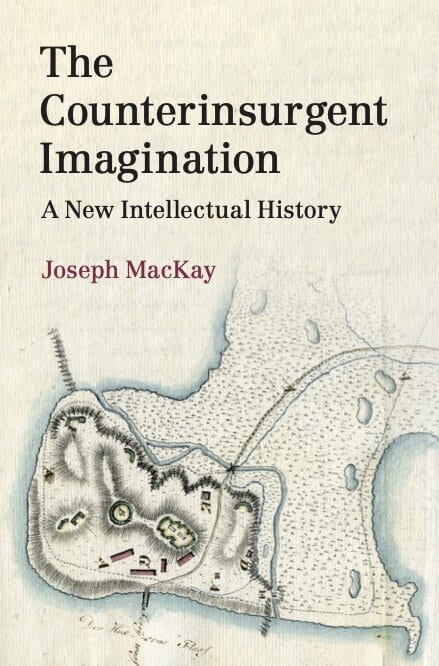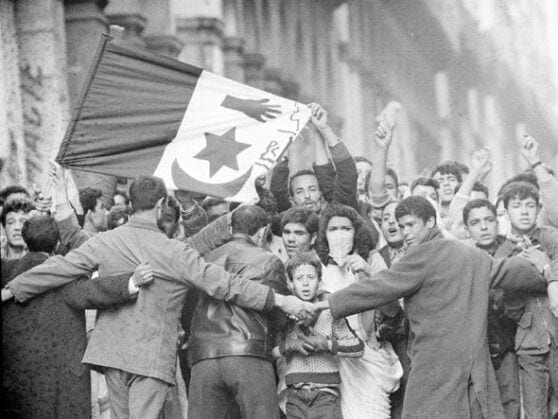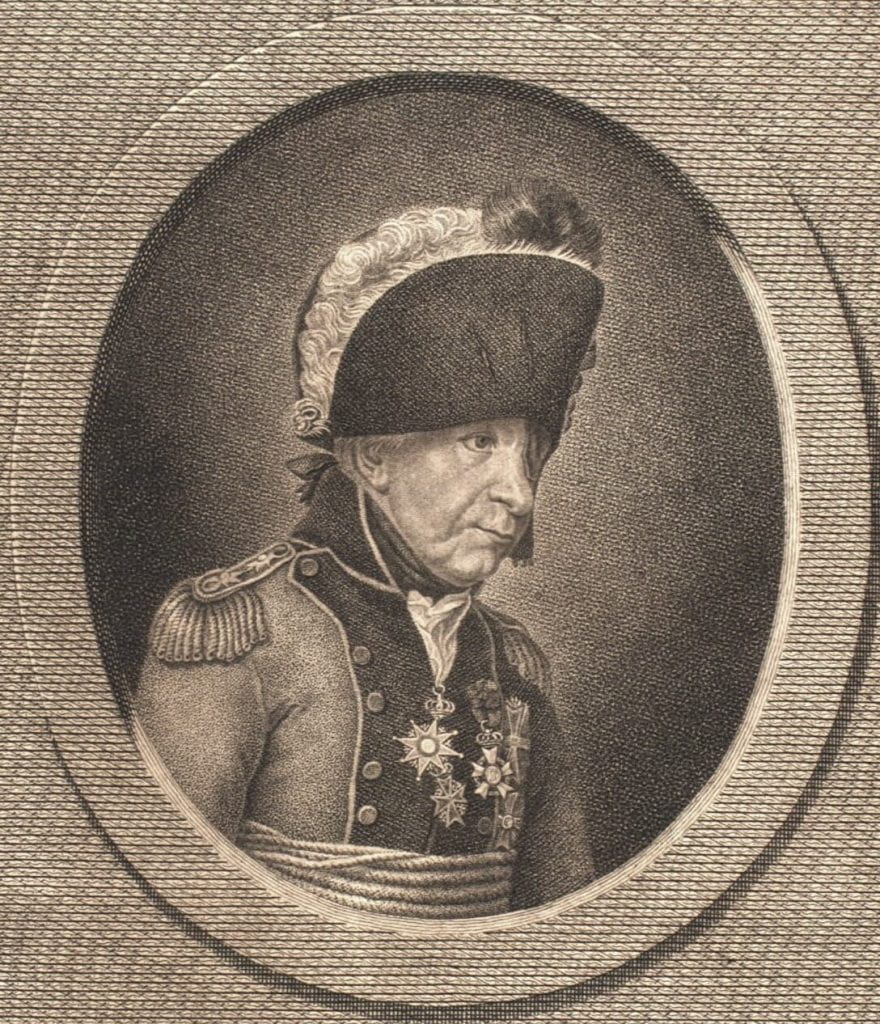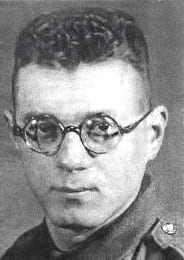
Joseph MacKay is a Fellow/Senior Lecturer in the Department of International Relations at the Australian National University. His research focuses on historical international hierarchies, historical international security, and the history of international thought. His first book, The Counterinsurgent Imagination: A New Intellectual History (Cambridge, 2022), draws on his doctoral research. He holds a PhD from the University of Toronto.
Thomas Furse is a primary editor of the JHIBlog. He spoke to Mackay about the intellectual history of counterinsurgency wars.
***
TF: You set the outline of the book as “a long-run intellectual history of counter-revolutionary wars” that uses a set of “military manuals as records of idealized practice” to maintain the status quo (pp. 3, 6). To understand these texts, you take your methodological cue from the Cambridge School, specifically from J.G.A. Pocock and David Armitage’s “serial contextualism.” Why did you choose this approach for your set of texts and to argue your case about counter-revolutionary war?
JM: The puzzle motivating the book is that there is a lot if you look at counterinsurgent or counter-revolutionary ideas over the long haul. A really remarkable variety of ideas. That variety narrows out quite a bit after 1945 or so, but that lines up broadly and roughly with a decline in counterinsurgent success rates in practice. So: why the wide variety? And why an eventual convergence of ideas that do not seem to work reliably in practice?
Answering these questions calls for a look at the relatively long run of modern counter-revolutionary war. I wanted to pull out a longer time horizon to consider what we now call counterinsurgency and its antecedents. Many historical accounts of this stuff start in the late nineteenth century, at the height of European colonialism. Work like that ties more recent practices back to overt, formal imperialism. It does that very effectively. I wanted to go further and see how imperial “small wars” talk came about. Doing that required going back to the centuries before the “new imperialism” in Africa and Asia and an in-depth case from before that period. So that is Johann von Ewald, a Hessian officer who served with the British in the American Revolutionary War. What we find there is not just a prior tradition but a fair bit of contestation already happening. Ewald came from a Central and Eastern European “small war” tradition associated with rural and geographically marginal spaces. It was not particularly ideological. But in America, he ran up against actual revolutionaries. His project became tacitly counter-revolutionary in response.
There has been some great work on European small wars that broader period in the last decade or so, for example, by Sibylle Scheipers, Beatrice Heuser, Bruce Buchan, and Benjamin Deruelle. Looking at that period, and focusing on Ewald, allowed me to establish a status quo ante for later imperial warfare practices associated with C. E. Callwell and others. From there, the story moves to better-trod ground and the eventual emergence of a post-1945, especially post-1960 consensus.
I focused on military manuals as a genre because they are the texts that most programmatically survey what counterinsurgents—armed counter-revolutionaries—think of as the right way to do what they do. Of course, there is no straightforward correlation between the manuals and actual practice. But manuals tell us what counterinsurgents think they should do, should be seen to, and think is politically permissible and desirable. They also change in interesting ways over the long haul of the study—becoming more official, technical, and detailed.
Anyhow, to unpack those variations across time seemed to me to require two parallel tasks, methodologically speaking: a long-run historical narrative and a series of deeper dives to look at how specific manuals—instructional texts—came about. The manuals belong historically to political, social, military, and sometimes institutional contexts. So I adopted a broadly contextualist approach, aiming to situate them among other period texts in the genre, as well as those larger sociopolitical situations. Doing that requires showing contextual change over the long run and then a series of specific manuals and their authors in a sequence of historical contexts. I follow David Armitage in calling the latter “serial contextualism”: a set of linked contextualist studies, in sequence, to capture moments in a longer set of overall processes. So that is what the book does. The aim is to explain where each text came from—how a given set of circumstances produced the authors and the books they wrote. From there, we can look at how they shaped practice, or at least official rhetoric, in the period that followed.
TF: In Graham Greene’s 1955 book, The Quiet American, Alden Pyle tells Thomas Fowler that it is “not that easy to be uninvolved,” which is, in a way, one the book and film’s takeaway quotes. It is about the French war in Indochina and foreshadows the US entry into the war, but it is also about the problems of remaining neutral and detached when covering wars. Similarly, in your book, you had to tread a line between understanding your subjects and how they found themselves in situations beyond their control and seeing them as morally questionable. We might sympathize with our subjects sometimes and other times find them repulsive during the process of historical research. How did you research and write your book with this in mind?
JM: As a matter of method, if I am honest, I do not think there are easy or systematic answers here. The record of these events and ideas has some ugly stuff in it. The reader is, I suspect, going to want to both understand and judge, in one balance or another. That presents a problem of how to present and interpret the record. Not knowing how to solve the problem, I tried to manage it. When historical figures in the book engaged in what we might call bad behavior, especially the three solo authors of historical manuals, I made a point of showing them doing that. I tried to trust the reader to judge rather than do that for them. Where there was useful context—incriminating, exculpatory, or otherwise—I tried to provide it. The book should leave the reader with a sense of the lay of the intellectual land and how they might navigate it in the broader historical record.
For example, Charles Edward Callwell is the figure in the book most associated with comparatively extreme violence, including against civilians, as a style of counterinsurgency. He repeatedly endorsed destroying villages, destroying food supplies, and otherwise openly violating the laws of war as he understood them. During the second South African war, he burned Boer farms. In his memoirs, he describes this as a practical matter, with no particular moral qualms at all—even with a sort of mordant humor. I contrast this with a report from a rank-and-file British soldier describing his own horror at a similar event. This way, we know other British troops made moral judgments here. Yet Callwell did not—it does not seem to have occurred to him. I think that is pretty telling.
These things can get harder to weigh at more remote historical distances or when the record is more ambivalent. For example, Johann Ewald, the Hessian mercenary who served with the British in the American Revolutionary War, said racist things about Black and Indigenous people. As someone fighting in a settler war in the Americas, he participated in slavery and settler colonialism. Yet race seems not to have been important to his ideas about irregular war, which were focused on Europe and European peoples. Here I was, concerned mostly to make sense of that apparent contradiction. I tried to make the wider period context of European ideas about race, irregular war, and related matters clear on the page. The reader can—should—still judge him, but my main concern was to make sure they had some reasonably sophisticated tools with which to do so.
All this goes a bit by the wayside in the book’s conclusion, where I admit I allowed myself to editorialize more. Rereading the manuscript as I wrote the conclusion, I found I had pretty strong opinions about where the historical long run leaves us. By this point in the text, I hope I have given the reader the wherewithal to draw conclusions of their own if they want to. They are welcome to disagree with me, but the balance of evidence points in some complicatedly troubling directions.
I might add that Greene’s novel is a favorite of mine. I think it is the only work of fiction I have ever required students to read. These questions of intellectual and political remove seem to me central to it. I wonder sometimes if Greene did not sympathize with Pyle more than he was willing to let on. Fowler, after all, is a kind of ideal unreliable narrator. And at the end, of course, Fowler is as involved as anyone—he gets his hands very dirty, albeit not for ideological reasons. In the line you quote, I wonder if Greene may have been speaking for himself, as a writer, as much as anything. The book has blindspots of its own. I suspect he knew that—and knew he could lose intellectual remove as easily as his characters.
TF: You have a chapter on C. E. Callwell, the “doyen” of Victorian small war theory (p. 152). His work was the Boer War, where he practiced his theory of war. We could think that southern Africa was a ‘bloodlands’ for the German, British, and Portuguese empires, who each fought a series of wars (the Herero and Namaqua wars and genocides, Boer Wars, the First Chimurenga, Anglo-Zulu Wars, Bailundo revolt, and Battle of Mufilo) at the end of the nineteenth and early twentieth century. As you show in the text, Callwell had an imperial arrogance about him, and this regional violence (or any at all) barely seemed to feature in his thinking. Did you find that the army officers across your timeline shared ideas about counter-revolutionary wars, or were their intellectual horizons quite narrow?
JM: Callwell was kind of an incurious guy. He liked to talk about learning from practice, but he had pretty strong priors. The British imperial project was absolutely central for him. The other empires do sometimes loom into view in his writing. At some point, he visited French North Africa and reported in his memoirs that “we could not have made a better business of developing and civilizing that part of the world than the French have.” For him, this was high praise. He also made chiefly positive comments about Russian colonialism, particularly in Small Wars, his manual, and elsewhere. He attributed a considerable predilection for violence to them, which he endorsed. But while he knew he was participating in a larger imperial system or set of projects of domination in Africa and Asia, his focus centered on the British experience. His knowledge of the others seems to have been chiefly historical.
That said, this is still the moment small wars become well and truly global. Callwell does get deployed across Afro-Eurasia—India, Afghanistan, and the like. And he had that historical knowledge of British, French, Russian, and other imperial wars globally. He seems to have been vaguer on the Americas, but it is still a pretty wide view.
In any case, once that global turn kicks in, it more or less sticks. Irregular warfare between, and at the margins of, the two world wars was, of course, pretty globally distributed. The attempts to preserve the European empires against revolutions that followed were as well. The British were trying to suppress revolutions in Kenya and Malaya at roughly the same time, if not reliably, in the same ways. The resulting instructional texts, their authors, and their biographies tend to reflect that scope. Someone like Frank Kitson turned up in Malaya, Kenya, Oman, Cyprus, and eventually Northern Ireland. And those are roughly the “lessons” that American counterinsurgents try to pick up circa 2005.
TF: The book really comes into its own with the chapter on David Galula and the Algerian War of Independence (1954-1962). His life makes a good story. He was a Jewish Tunisian raised in Casablanca who then got an elite French officer education at École spéciale Militaire de Saint-Cyr in 1939. He then evaded the Vichy government and the Nazis and, after the war, went to China to learn Mandarin and Maoist revolutionary tactics. His main deployment was, of course, Algeria, where he fought the FLN that were pursuing Algerian independence. The systematic torture of suspected terrorists, the Milk Bar Bombing, the French Foreign Legion, the film Battle of Algiers, two failed French military coups in 1958 and 1961, the end of the Fourth Republic, and of course, Franz Fanton’s The Wretched of the Earth made the war infamous. It seems an messy uncontrollable counterinsurgency war. You argue Galula adopted a “spare and modernist model of counterinsurgency” (p. 160), which you akin to a bureaucratic sociological approach to counterinsurgency operations (as opposed to psychological). After the war, Galula went to Harvard and wrote the Pacification in Algeria, 1956–1958 paper that later became influential in US military circles. So, how can we think of Galula as a theorist of empire?
JM: Empire was incredibly central to Galula’s political experience in all sorts of ways. It is odd then that, in a sense, he had very little to say about it theoretically. It was as much a thing he did and had done to him as something he had any general conception of—at least that he put to paper. He was certainly a carrier of colonial ideas. He seemed to be a true believer in French colonialism as an ameliorative project. Of course, it is also all over his personal experience from his colonial education before Saint-Cyr onward. The high school (lycée) he attended in Casablanca was named for Hubert Lyautey. So we might say his pathway to his eventual French nationalism was distinctively influenced by the empire. He thought and spoke in ways that took the French empire as given. We see this in his attitudes toward Islam, ways of speaking about colonial “development,” and the like. His basic project was to roll back insurgency, which he understood in Maoist terms, and re-establish colonial control. Victory for Galula was a victory not just over insurgency but also “maintained by and with the population.” He hoped to regain, if not their beliefs, then at least their reliable acquiescence—that was the world he wanted back.
In terms of how he saw himself, perhaps the first thing to know is that he was a kind of nationalist or patriot. When his biographer asked his widow about his politics, the first thing she said was, “He loved France.” That bears out. At some point in the mid-sixties, he declined a job with an American firm because he would have had to give up his French citizenship to get the required security clearance. He was serious about it, though he had acquired it somewhat tenuously.
Perhaps because of all this, his ideas about empire do not always easily disentangle from his general status quo conservatism and his anti-communism. He also likely played his colonialist views a bit close to his chest—his Anglophone readers were chiefly Americans who, rightly or wrongly, did not think of themselves as engaged in colonial warfare. He could be defensive about this stuff. He says in his RAND report, describing something in Algeria, that “I sound no doubt terribly colonialist, but it’s a fact.” Recall Fowler letting the mask slip a little and saying to his American counterpart, “We are the old colonial peoples, Pyle, but we’ve learnt a bit of reality.” This was Galula’s situation—he aimed to make a case for his own methods without quite saying out loud that he was an imperialist.
In terms of his background, I think there is a pattern of sorts here, with more than a few counterinsurgents coming from a grab bag of near- or semi-peripheral backgrounds. Callwell was born to Irish parents in London. Ewald came up through military service in a small (and highly militarized) German state to serve the British and eventually join the Danish nobility. Even David Petraeus is the son of an immigrant—though he grew up a few miles from West Point—and had an Australian in his circle. Beyond the cases in this book, midcentury counterinsurgents like Napolean Valeriano and Abdul Haris Nasution were explicitly figures from former colonies who learned in uniform to put down rebellions, sometimes across multiple settings. So there is a pattern here of people who were, variously, not or not quite from the core, who experienced upward mobility. For many of these authors, at least, imperial militaries were pathways to improved social class or status. And the networks they moved on, like many imperial networks, were profoundly transboundary or transnational. It is remarkably common across the modern period. While the networks are not all explicitly imperial, they tend to have that pattern of qualities.
TF: The last manual you examine is the 2006 US Army and Marine Corps field manual (FM 2-34), which is the most sophisticated text in the book and the one used in the Iraq War. It is, you argue, replete with neoliberal managerial speak and has a US securocrat feel, as opposed to the writing of a ‘genius’ individual. You explore the group that wrote and edited the manual—David Petraeus, John Nagl, Montgomery McFate, Conrad Crane, David Kilcullen, and others such as Don Snider and Richard Swain. You call them “internal nonconformists” (p. 203). They had a curious mix of backgrounds, McFate grew up in the poverty of ‘hippie’ communes in California, Kilcullen’s parents were left-wing academics, and Petraeus seemed to have a middle-class start in life. How did you draw out these identities and power structures in their work? How do you think future intellectual historians can think about the meaning of authorship when the text is collaborative and semi-anonymous?
JM: It is an interesting question. The other manuals, although not traditional intellectual history fare, are at least single-author documents. So we do not have to piece their authorship together. In this case, we only know who wrote what from reports after the fact. The authors partially promoted the text through a standard narrative of how it was produced. That narrative foregrounds the rush, the pressure, and the collaborative environment. Ironically, it also made several of them public figures. But in the end, we know one or two specific people drafted each chapter, many of them not well known, then fed through a revision and editorial process—one that, by the end, was pretty deeply embedded in military bureaucracy.
Some authors’ personal recollections of the process are pretty extensive. Conrad Crane’s memoir of it is forensic. It is a remarkable record. The less publicly visible authors, like Snider and Swain, have not spoken much about the process, at any length, that I am aware of (and I have not spoken to them). So there is a sort of closed-book quality to some of this.
I would bet these are methodological challenges intellectual history will continue to face variations on. As researchers turn to explain more recent genres of text, we are going to find that knotty questions of authorship, editorship, institutional setting, and so on are hard to avoid. I am thinking, for example, of what Jennifer Schuessler, Asheesh Kapur Siddique, and others have called “paperwork studies,” wherein lots of less canonical forms or genres of text turn out to have meanings, and thus histories, of their own. Those meanings and histories will often belong to institutional settings and styles of collaboration.
For me, at least, I tend toward two ways to think methodologically here. One is to do our best to reconstruct the micro-level processes. Who said what, when, in what context, and so on. So you build up the historical analysis of the individuals and how they dealt with one another. The other is to take institutional authorship seriously. The institutions will have norms, cultures, processes, authority structures, and so on, through which this stuff gets produced. In practice, the two kinds of processes will also interact a fair bit.
In making sense of FM 3-24, I tried to do a bit of both. I hope the reader will see two things. On the one hand, there is how the Army and the Marines went about causing the manual to be produced within a set of broad genre specifications and managing or constraining how the writing process went and what the manual could say. Conversely, we see how the individuals involved work within those constraints. Sometimes we see institutions contending with one another, too—which may constrain individuals and may open up opportunities for them. It all gets more, well, political. In this case, several authors—Petraeus, Nagl, among them—were students of organizational politics and learning. They brought, or likely thought they brought, prior understandings of how all that infighting would work. So a lot is going on here. In the end, capturing the cacophony is probably part of the job, and at times it may be the best we can do. I hope that is part of what the book does.
Tom Furse is a primary editor at the JHI Blog and a PhD student at City, the University of London. He researches the connections between strategic thought, the social sciences, management theory and political economy.
Featured Image: A pro-independence front de libération nationale protest in Algeria. Creative Commons.





